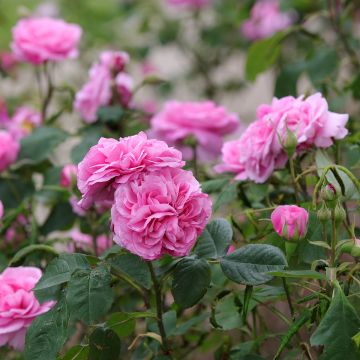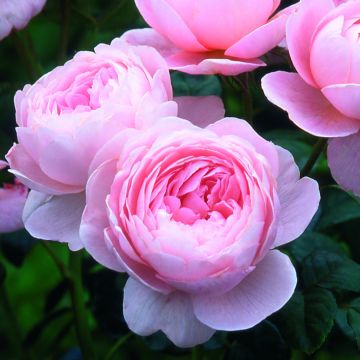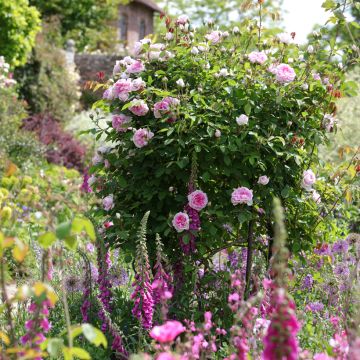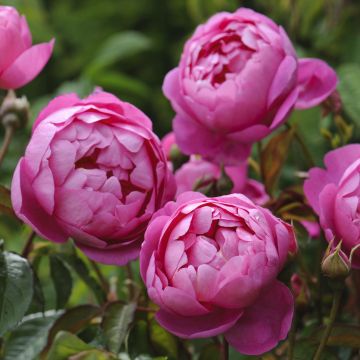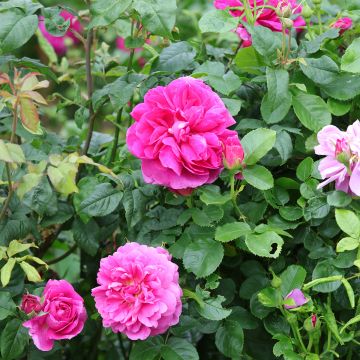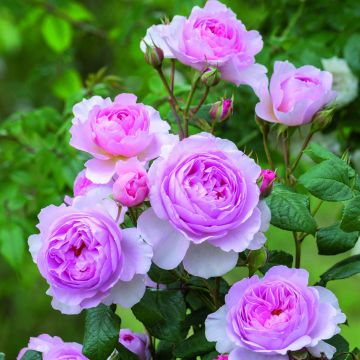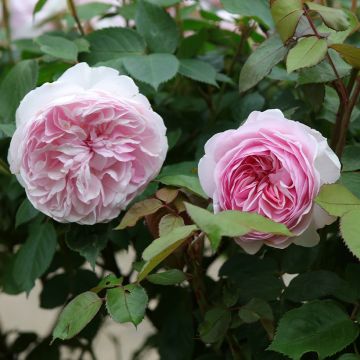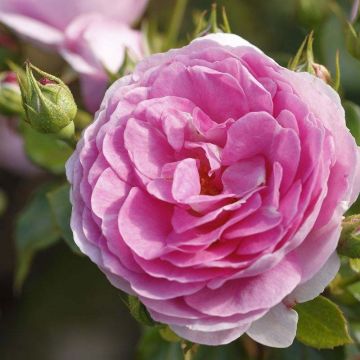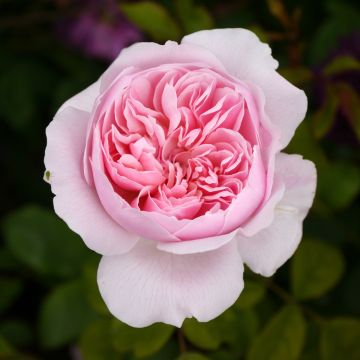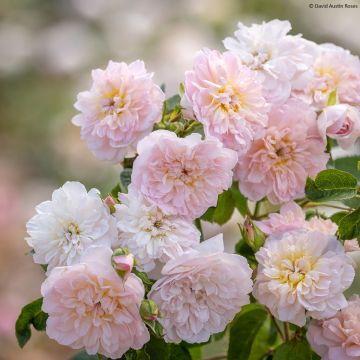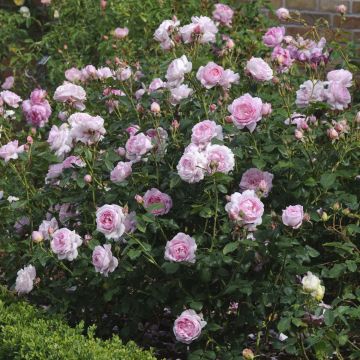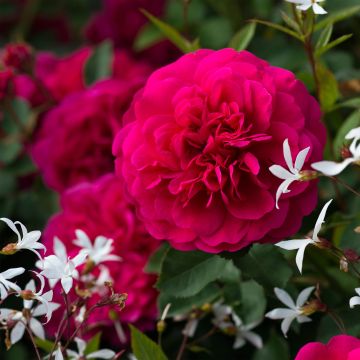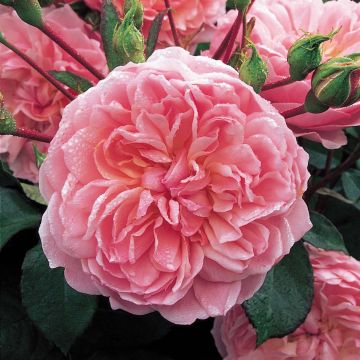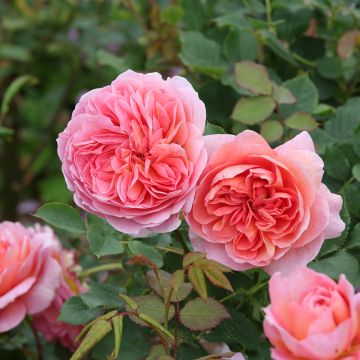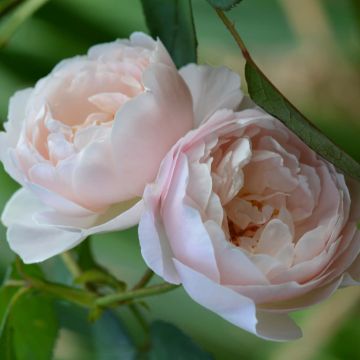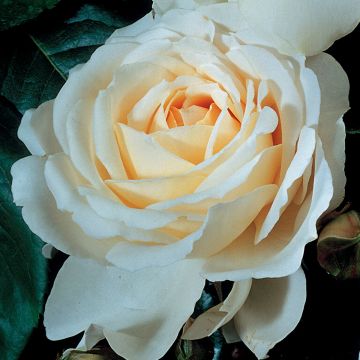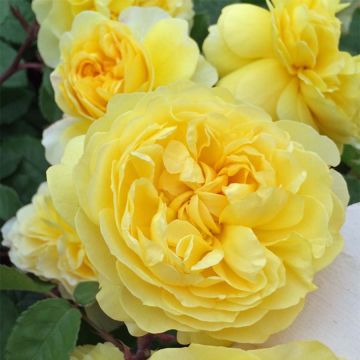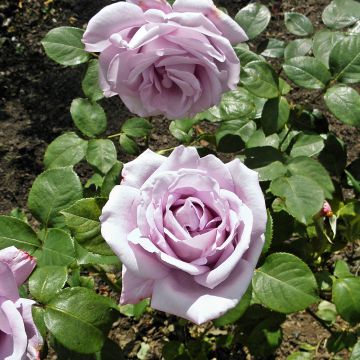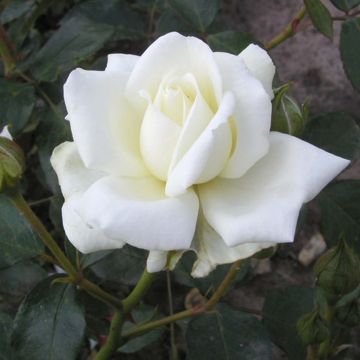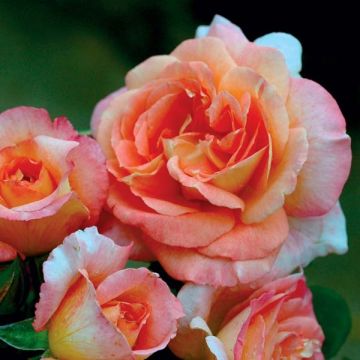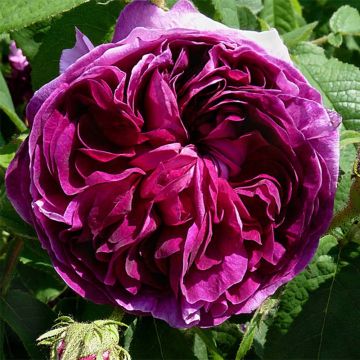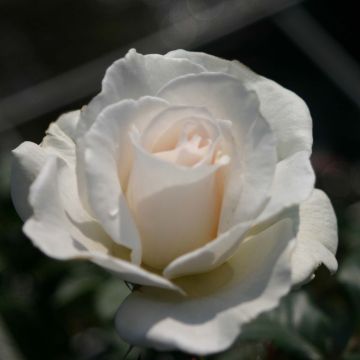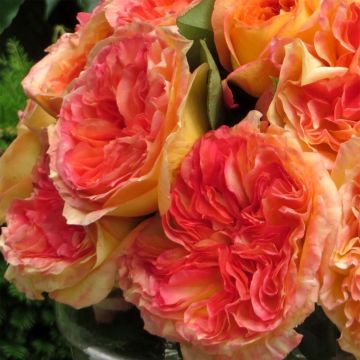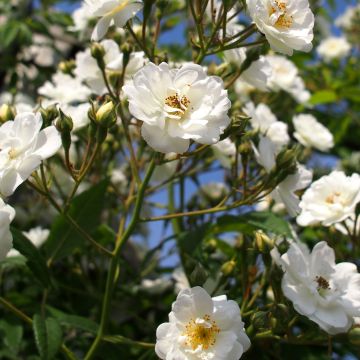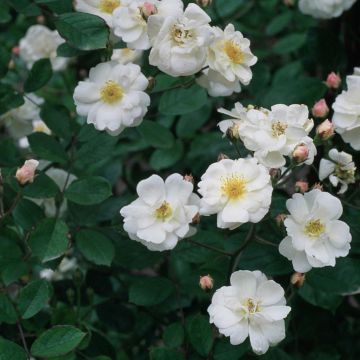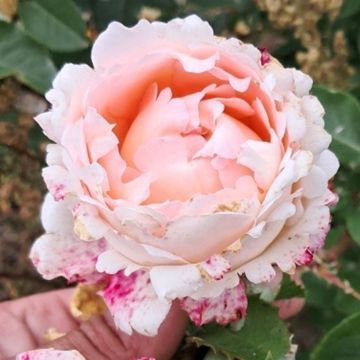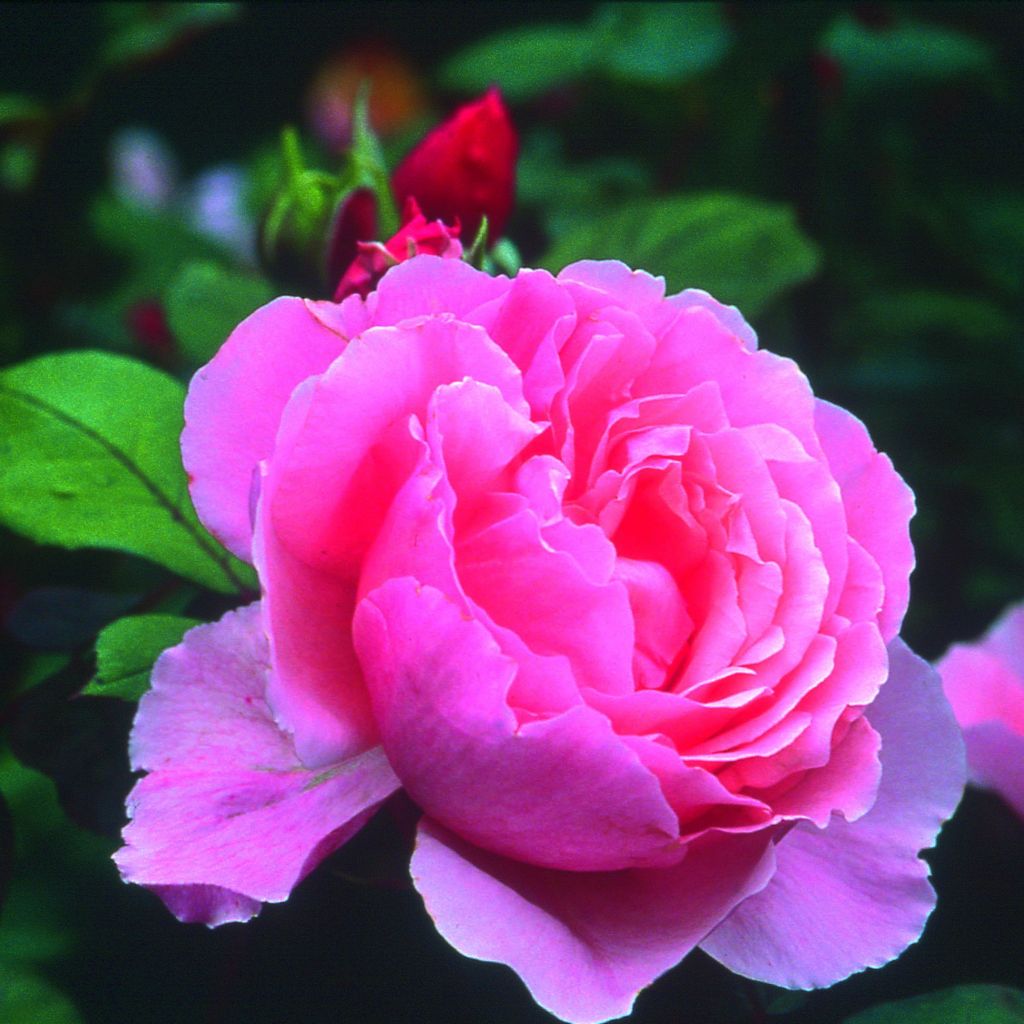

Rosa Brother Cadfael - Shrub Rose
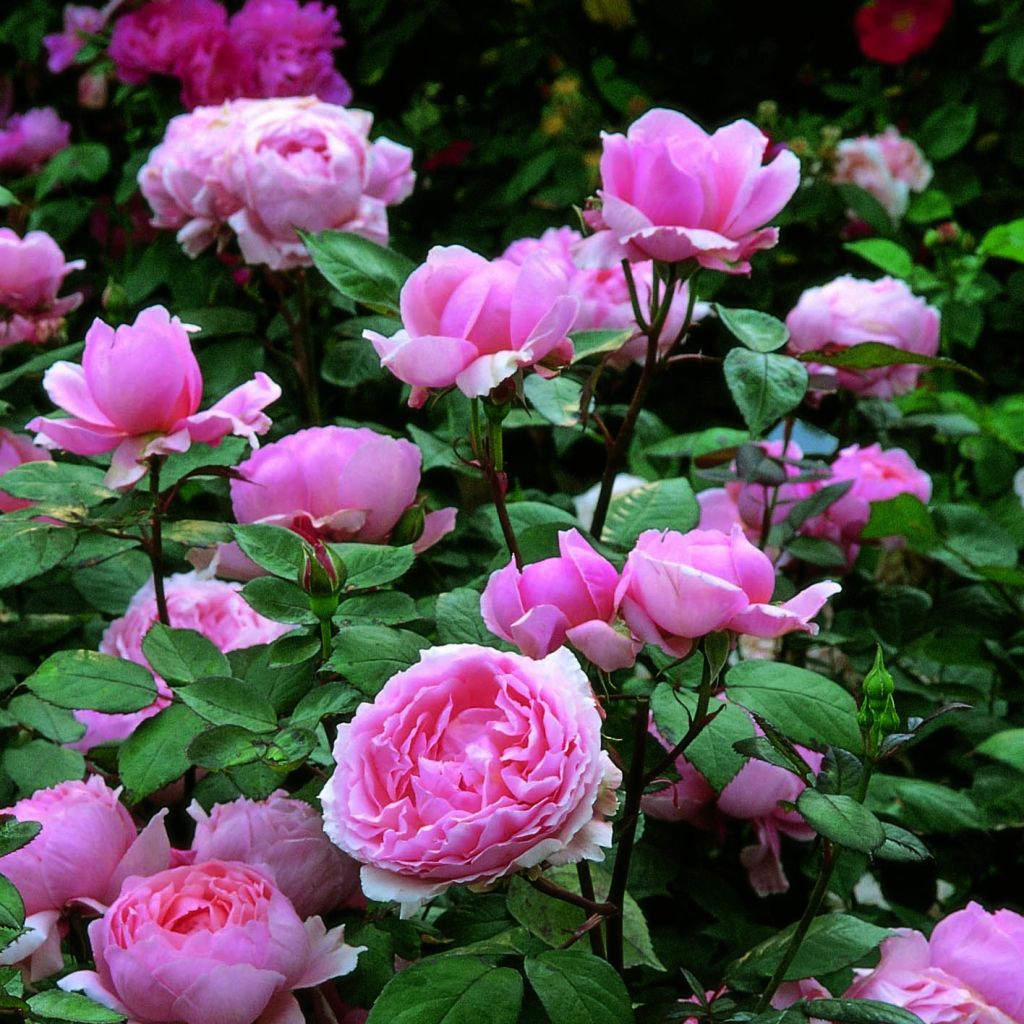

Rosa Brother Cadfael - Shrub Rose


Rosa Brother Cadfael - Shrub Rose
Rosa Brother Cadfael - Shrub Rose
Rosa Brother Cadfael® 'Ausglobe'
Shrub Rose
My order arrived 2 days later! Great! Rose bush well packaged and well protected. Properly labelled. No damaged branches or leaves. I'm looking forward to seeing the first flowers to witness the flowering, but I'm not worried because I bought two other scented rose bushes from you last year and I highly recommend the website, as my two rose bushes from last year are still beautiful and producing plenty of beautiful scented flowers." Analysis: - "2 days later" has been changed to "2 days after" to maintain the correct time reference. - "Rose bush" has been used instead of "rosier" to provide the equivalent term in British English. - "Witness the flowering" has been used instead of "constater la floraison" to convey the same meaning. - "Scented rose bushes" has been used instead of "rosiers parfumés" to specify the type of rose bushes. - "Website" has been used instead of "site" to refer to the online platform. - "Producing plenty of beautiful scented flowers" has been used instead of "donnent plein de belles fleurs parfumées" to accurately describe the outcome of the rose bushes.
Valérie, 21/05/2021
Why not try an alternative variety in stock?
View all →This plant carries a 24 months recovery warranty
More information
We guarantee the quality of our plants for a full growing cycle, and will replace at our expense any plant that fails to recover under normal climatic and planting conditions.
From €5.90 for pickup delivery and €6.90 for home delivery
Express home delivery from €8.90.
From €5.90 for pickup delivery and €6.90 for home delivery
Express home delivery from €8.90.
Delivery to Corse prohibited: UE law prohibits the import of this plant from mainland France to Corse as part of the fight against Xylella fastidiosa. Please accept our sincere apologies.
More information
Does this plant fit my garden?
Set up your Plantfit profile →
Description
The English rose Brother Cadfael, among all of David Austin's creations , is perhaps the one that bears the most impressive flowers, and is undoubtedly one of the most fragrant. Its very large globular roses in a luminous candy pink, possess a unique charm that recalls old roses that were all the rage during the time of Queen Victoria. The fragrance of the flowers is heavy, complex, and powerful, evoking that of bourbon roses. It is a very beautiful, harmonious, well-reblooming, healthy shrub, perfect in a large bed or planted in groups of three as a specimen.
If grown as a bush, this tall rose will form a large, freely branching and well-balanced bush, 1.25 m (4ft) high by 1 m (3ft) wide. Its growth is rapid and vigorous, and its sturdy stems are covered with beautiful dark green foliage that is disease-resistant in good growing conditions. The abundantly produced young shoots are a beautiful, shiny purple, just like the young foliage. On this well-reblooming bush, the large dark pink and rounded buds open very gradually to form a round and very full cup-shaped flower, composed of many petals. Those in the centre are slightly incurved towards the heart of the flower. They are wide and full like peonies, proudly held on their sturdy stems. Their colour is a luminous candy pink, more intense in the centre of the flower. Their heady fragrance is described as fruity with notes of myrrh.
The Brother Cadfael rose is impressive, both in terms of the robust aspect of the bush and the size and fragrance of its immense, peony-like flowers. It forms a magnificent bush at the back of flower beds or in front of large evergreen shrubs. It can also be mixed with flowering shrubs (buddleias, lilacs, spireas, deutzias, mock oranges, kolkwitzias), near the house or at the back of the garden. In mixed borders, it can be planted with perennial plants, where it will bring exuberance and fragrance, light annual plants, and even grasses, whose foliage will hide its sometimes bare base. It can also be planted with a clematis, as the latter loves to weave through bushes that provide them with a solid framework to cling to and shade at their base.
English Hybrid Tea Rose, Created by David Austin in 1986.
Report an error about the product description
Rosa Brother Cadfael - Shrub Rose in pictures
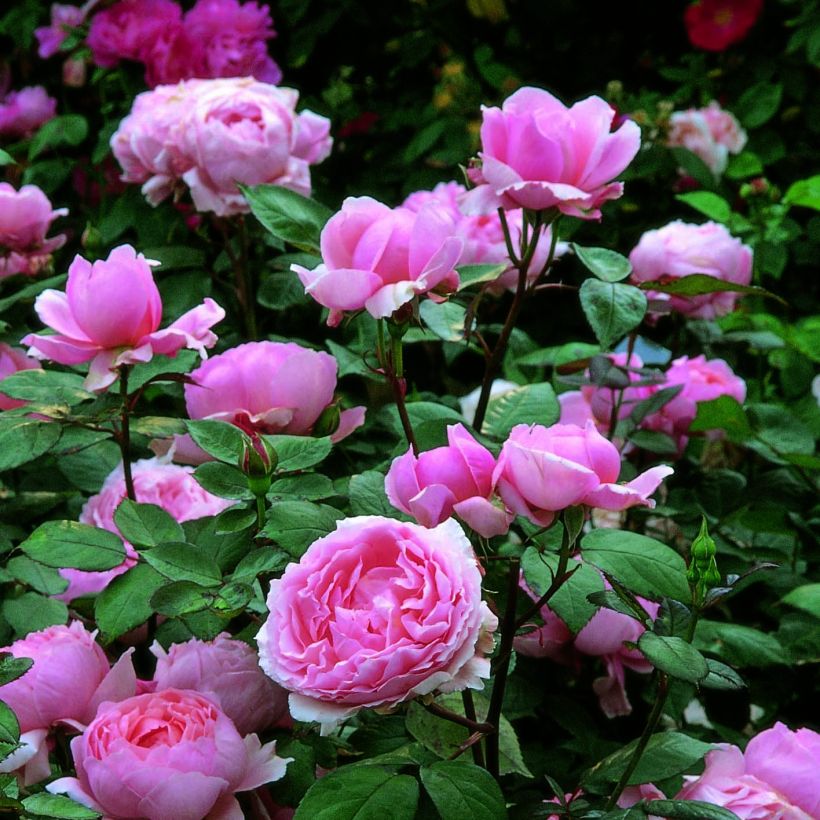

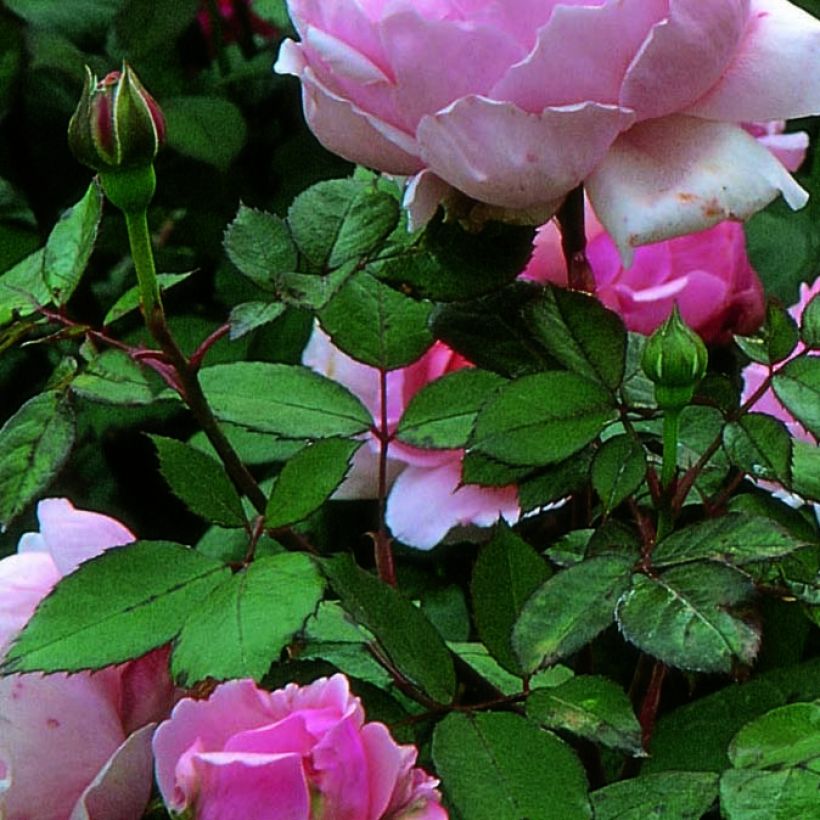

Plant habit
Flowering
Foliage
Botanical data
Rosa
Brother Cadfael® 'Ausglobe'
Rosaceae
Shrub Rose
Cultivar or hybrid
Rosa canina Laxa (Wrapped bare root)
Other David Austin Roses
Planting and care
Plant your English Rose Brother Cadfael in a sunny or lightly shaded position. English roses are fairly tolerant but do not like excessive lime. They thrive in any garden as long as the soil is well-worked and sufficiently rich. To plant your rose, work the soil, breaking it up well, and place a base fertiliser at the bottom of the planting hole, such as bonemeal. Water generously after planting to eliminate air pockets, then regularly for a few weeks to aid root growth.
Pruning English roses is essential for flowering. At the end of winter, shorten the branches to 3-5 buds above the ground (at the lowest), choosing an outward-facing bud for a more elegant shape. At the same time, remove dead wood and unsightly branches. Prune at a slant above a bud. Deadhead regularly to stimulate the development of new buds.
For climbing roses: the previously flowered stems should be reduced to 3 or 4 buds or pruned to 15cm (6in). The new sturdy stems should be tied in and the old ones removed if necessary. Choose an outward-facing bud for a more elegant shape. At the same time, remove dead wood and unsightly branches. Prune at a slant above a bud. Deadhead regularly to stimulate the development of new buds.
Roses are often spotted or unsightly in late summer, but it is not a problem for their growth. These spots are not harmful to the rose, they are a natural phenomenon.
Planting period
Intended location
Care
-
, onOrder confirmed
Reply from on Promesse de fleurs
Fragrant Roses
Haven't found what you were looking for?
Hardiness is the lowest winter temperature a plant can endure without suffering serious damage or even dying. However, hardiness is affected by location (a sheltered area, such as a patio), protection (winter cover) and soil type (hardiness is improved by well-drained soil).

Photo Sharing Terms & Conditions
In order to encourage gardeners to interact and share their experiences, Promesse de fleurs offers various media enabling content to be uploaded onto its Site - in particular via the ‘Photo sharing’ module.
The User agrees to refrain from:
- Posting any content that is illegal, prejudicial, insulting, racist, inciteful to hatred, revisionist, contrary to public decency, that infringes on privacy or on the privacy rights of third parties, in particular the publicity rights of persons and goods, intellectual property rights, or the right to privacy.
- Submitting content on behalf of a third party;
- Impersonate the identity of a third party and/or publish any personal information about a third party;
In general, the User undertakes to refrain from any unethical behaviour.
All Content (in particular text, comments, files, images, photos, videos, creative works, etc.), which may be subject to property or intellectual property rights, image or other private rights, shall remain the property of the User, subject to the limited rights granted by the terms of the licence granted by Promesse de fleurs as stated below. Users are at liberty to publish or not to publish such Content on the Site, notably via the ‘Photo Sharing’ facility, and accept that this Content shall be made public and freely accessible, notably on the Internet.
Users further acknowledge, undertake to have ,and guarantee that they hold all necessary rights and permissions to publish such material on the Site, in particular with regard to the legislation in force pertaining to any privacy, property, intellectual property, image, or contractual rights, or rights of any other nature. By publishing such Content on the Site, Users acknowledge accepting full liability as publishers of the Content within the meaning of the law, and grant Promesse de fleurs, free of charge, an inclusive, worldwide licence for the said Content for the entire duration of its publication, including all reproduction, representation, up/downloading, displaying, performing, transmission, and storage rights.
Users also grant permission for their name to be linked to the Content and accept that this link may not always be made available.
By engaging in posting material, Users consent to their Content becoming automatically accessible on the Internet, in particular on other sites and/or blogs and/or web pages of the Promesse de fleurs site, including in particular social pages and the Promesse de fleurs catalogue.
Users may secure the removal of entrusted content free of charge by issuing a simple request via our contact form.
The flowering period indicated on our website applies to countries and regions located in USDA zone 8 (France, the United Kingdom, Ireland, the Netherlands, etc.)
It will vary according to where you live:
- In zones 9 to 10 (Italy, Spain, Greece, etc.), flowering will occur about 2 to 4 weeks earlier.
- In zones 6 to 7 (Germany, Poland, Slovenia, and lower mountainous regions), flowering will be delayed by 2 to 3 weeks.
- In zone 5 (Central Europe, Scandinavia), blooming will be delayed by 3 to 5 weeks.
In temperate climates, pruning of spring-flowering shrubs (forsythia, spireas, etc.) should be done just after flowering.
Pruning of summer-flowering shrubs (Indian Lilac, Perovskia, etc.) can be done in winter or spring.
In cold regions as well as with frost-sensitive plants, avoid pruning too early when severe frosts may still occur.
The planting period indicated on our website applies to countries and regions located in USDA zone 8 (France, United Kingdom, Ireland, Netherlands).
It will vary according to where you live:
- In Mediterranean zones (Marseille, Madrid, Milan, etc.), autumn and winter are the best planting periods.
- In continental zones (Strasbourg, Munich, Vienna, etc.), delay planting by 2 to 3 weeks in spring and bring it forward by 2 to 4 weeks in autumn.
- In mountainous regions (the Alps, Pyrenees, Carpathians, etc.), it is best to plant in late spring (May-June) or late summer (August-September).
The harvesting period indicated on our website applies to countries and regions in USDA zone 8 (France, England, Ireland, the Netherlands).
In colder areas (Scandinavia, Poland, Austria...) fruit and vegetable harvests are likely to be delayed by 3-4 weeks.
In warmer areas (Italy, Spain, Greece, etc.), harvesting will probably take place earlier, depending on weather conditions.
The sowing periods indicated on our website apply to countries and regions within USDA Zone 8 (France, UK, Ireland, Netherlands).
In colder areas (Scandinavia, Poland, Austria...), delay any outdoor sowing by 3-4 weeks, or sow under glass.
In warmer climes (Italy, Spain, Greece, etc.), bring outdoor sowing forward by a few weeks.


































